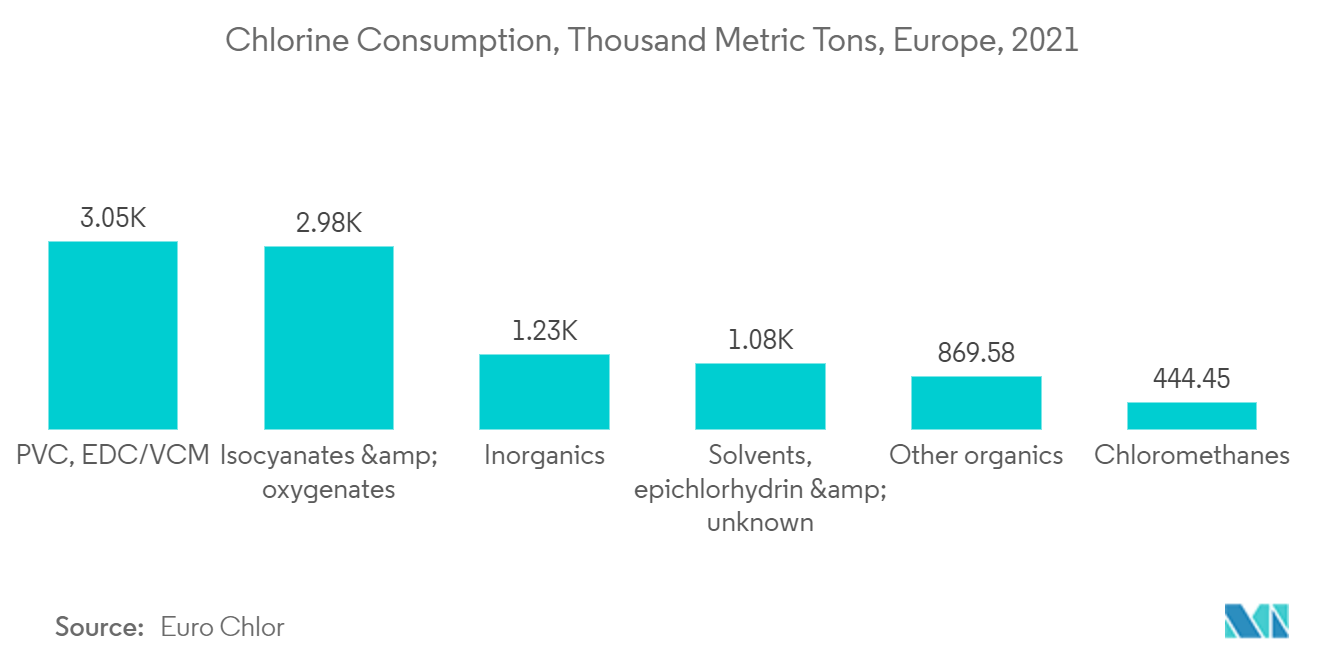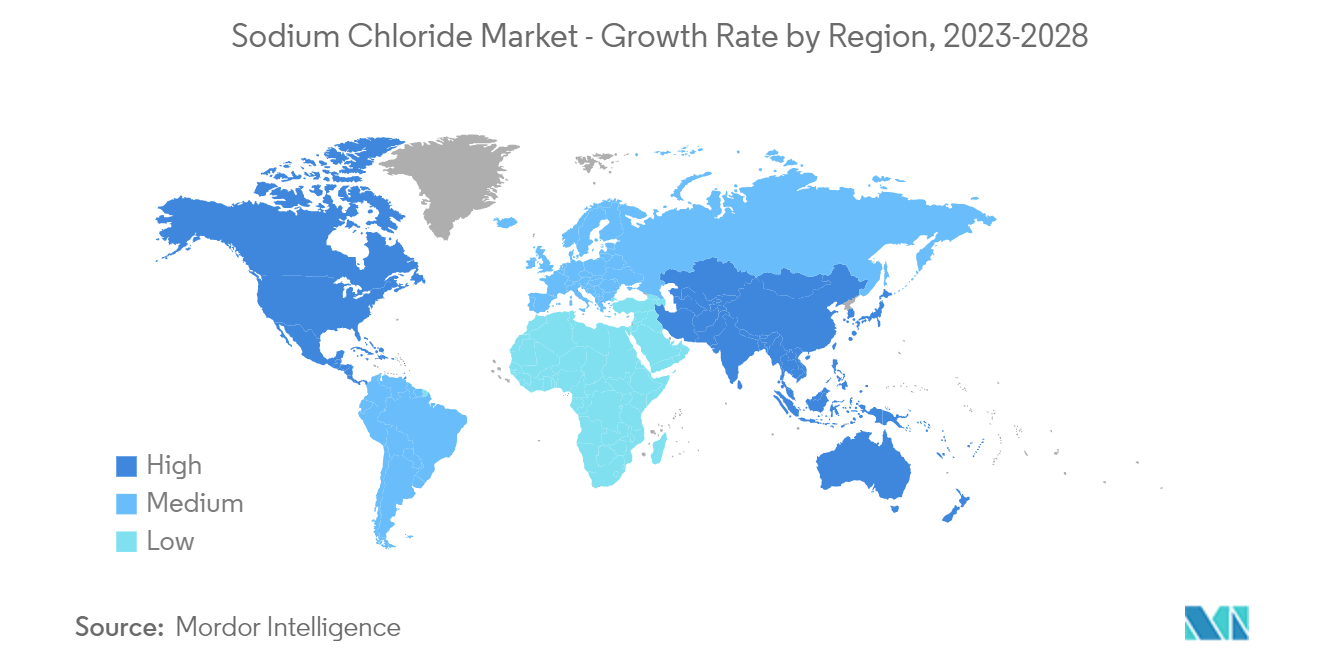Market Trends of Sodium Chloride Industry
This section covers the major market trends shaping the Sodium Chloride Market according to our research experts:
Chemical Production Segment to Dominate the Market
- Sodium chloride produces many chemicals, including organic, inorganic, and chlor-alkali compounds such as chlorine, soda ash, and caustic soda. These materials are then used to make various products, including polyvinyl chloride (PVC), detergents, glass, dyes, and soaps.
- In addition to being utilized in the production of detergents and the metallurgical industry, sodium carbonate (soda ash) is also employed in producing heavy chemicals, including phosphates, silicates, and glass. Limestone and sodium chloride, both of which are inexpensive and widely accessible, is used in the Solvay process. Ammonia and carbon dioxide turn salt and limestone into sodium carbonate.
- In 2021, 9,645 kilotons of chlorine were generated, an increase of around 4.6% from the year before, according to the Chlor-Alkali Industry Review. Additionally, chlorine consumption increased by almost 3%, from 79.5% in 2020 to 82.5% in 2021.
- According to the report, most chlorine produced was used in the PVC, EDC/VCM application, accounting for approximately 31.6%, followed by Isocrynates and Oxygenates (30.8%) and Inorganics (12.7%).
- According to the United Census Bureau, overall construction spending in the United States in December 2022 was USD 1,809.8 billion. On a year-over-year basis, the construction sector increased by 7.7% in December compared to December 2021, with total spending reaching USD 1,681.0 billion. It, in turn, enhanced the demand for PVC products and polyurethane-based construction industry materials, such as rigid foam insulation panels.
- Furthermore, caustic soda is used in the Kraft process, which converts wood into wood pulp and is still the dominant method in paper manufacture. According to the Chlor-Alkali Industry Review, 9,250 kilotons of caustic soda were utilized in the European region in 2021, with Organics accounting for the major share.
- Therefore, based on the factors above, the chemical products segment is expected to dominate the market in the coming years.

Asia-Pacific Region to Dominate the Market
- Asia-Pacific dominated the global market share, with rising demand from the chemical industry. China is a hub for chemical processing, accounting for most chemicals produced globally.
- According to the National Bureau of Statistics of China, the country generated over 39 million metric tons of Sodium Hydroxide, which can be used to make chemicals, water treatment, and metal processing. In addition to industrial use, sodium hydroxide is commonly found in domestic cleaning detergents.
- According to the statistics presented by the Ministry of Chemicals and Fertilizers, India, major chemicals production climbed by 5.73% to 43.51 lakh tons in 2022-23 (up to July 2022) compared to 41.15 lakh tons in the previous year's similar period.
- Sodium chloride also serves its purpose in various applications in the pharmaceutical industry. It is used in manufacturing APIs and other products, such as dialysis and infusion solutions, injections, saline drips, and oral rehydration salts.
- According to the estimations by IQVIA, China, the world's second-largest pharmaceutical spending country, will increase the volume of the segment by 8% over five years, while spending will increase by 19%, a slower rate than in previous years but still at a focus on extending access to innovative drugs.
- The Indian pharmaceutical industry is also expected to reach ~USD 130 billion by 2030, as the India Brand Equity Foundation (IBEF) suggested. The country is the largest producer of vaccines worldwide, accounting for around 60% of the total vaccines as of 2021, and ranks third across the globe for pharmaceutical production by volume.
- With the ever-increasing demands in the different sectors related to the sodium chloride market in one way or another, the market for the same is expected to be dominated by the Asia-Pacific region.


